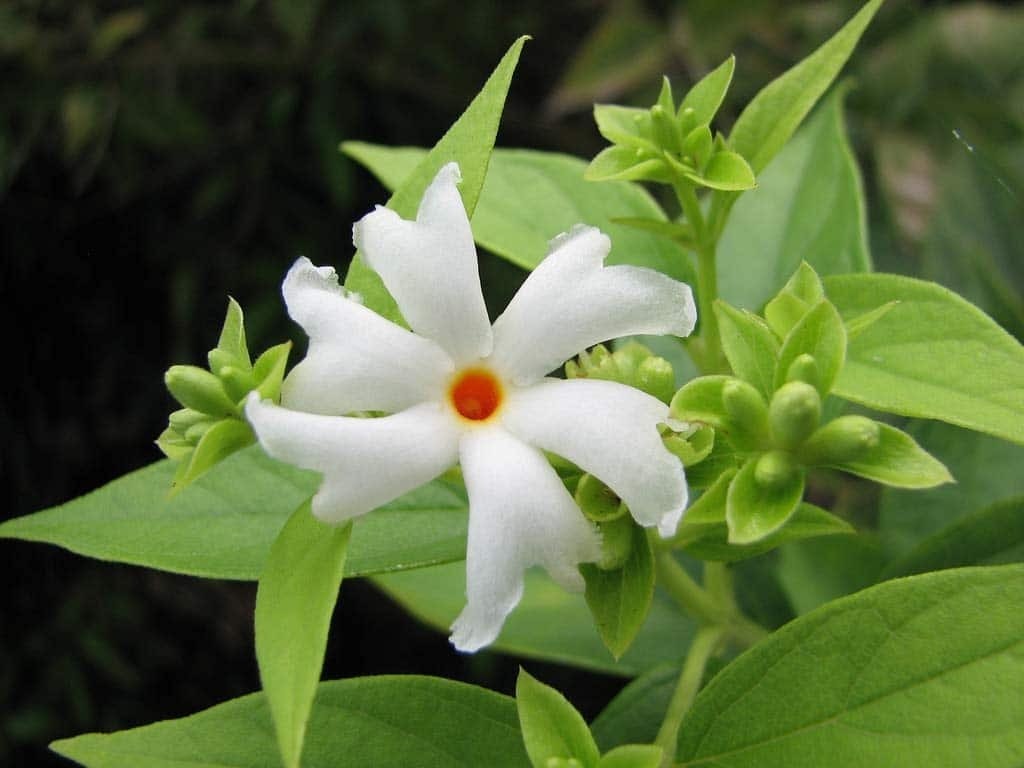Plantparadise
All Time Parjat Flower Plant
All Time Parjat Flower Plant
Couldn't load pickup availability
Parijat, scientifically known as Nyctanthes arbor-tristis, is a fragrant flowering plant that holds cultural and religious significance in various parts of the world. Here's a description of the Parijat flower plant:
Appearance:
-
Leaves: Parijat plants have simple, opposite leaves that are dark green and glossy. The leaves are lance-shaped and have serrated edges.
-
Flowers: The most distinctive feature of the Parijat plant is its fragrant, star-shaped white flowers. These flowers typically have a cluster of orange-red stamens at the center, creating a striking contrast against the white petals. Each flower has a delicate, ethereal appearance.
Growth Habit:
-
Size: Parijat plants are usually small to medium-sized shrubs or small trees. Their size can vary based on growing conditions and pruning.
-
Habit: The plant has a bushy and spreading growth habit, with branches that often form a rounded canopy.
Cultivation:
-
Climate: Parijat is native to South Asia and is often found in tropical and subtropical regions. It thrives in warm and humid climates.
-
Light: Parijat plants prefer full sun to partial shade. They require good sunlight exposure to produce abundant flowers.
-
Soil: Well-draining soil is essential for Parijat plants. They can tolerate a range of soil types but prefer soil that is rich in organic matter.
-
Watering: Regular watering is necessary, especially during the growing season. Keep the soil evenly moist but not waterlogged.
-
Fertilization: Feed the plant with a balanced, slow-release fertilizer during the growing season to encourage healthy growth and flowering.
-
Pruning: Pruning can help shape the plant and remove dead or overgrown branches. It's typically done after the flowering season to maintain a neat appearance.
Cultural Significance:
-
Parijat flowers hold cultural and religious significance in Hindu mythology and various traditions. The flowers are often associated with tales of love and devotion.
-
In some cultures, Parijat flowers are offered in worship to deities and are used in religious ceremonies.
Fragrance:
- One of the most appealing aspects of the Parijat flower is its strong, sweet fragrance. The flowers release their scent primarily during the evening and night.
Landscape Use:
-
Parijat plants are commonly grown in gardens, temple courtyards, and landscapes for their ornamental value and cultural importance.
-
Due to their relatively small size, they can also be grown in containers on patios or balconies.
Overall, Parijat is a captivating plant known for its fragrant and striking white flowers, as well as its cultural significance. It adds a touch of elegance and charm to any garden .
Materials
Materials
Shipping & Returns
Shipping & Returns
Dimensions
Dimensions
Care Instructions
Care Instructions






